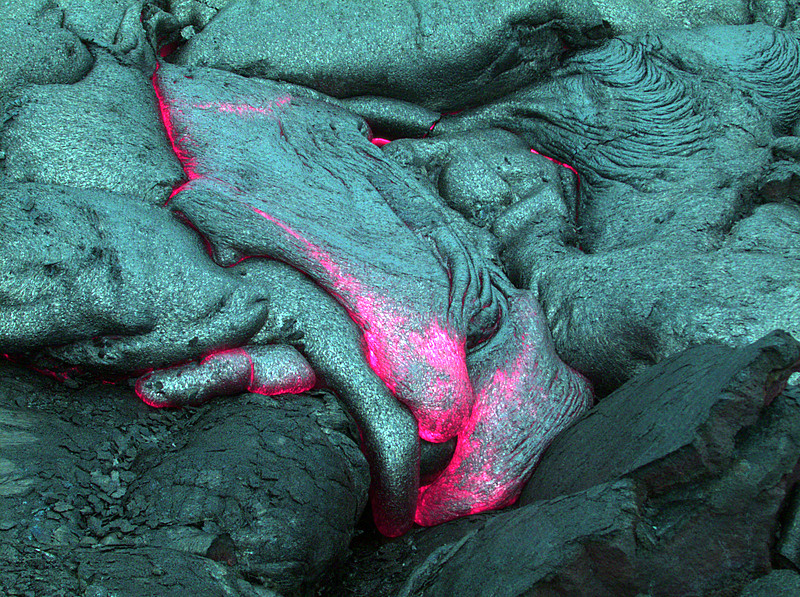Quakes from within the magma
Interview with
Meera - Just before a volcano erupts there are often earthquakes of varying intensities. Scientists had already realised that the movement of molten rock, or magma, can often cause these quakes. What they hadn't realised was that even at very high temperatures, when you would expect magma to be soft, it can still fracture like brittle rock. It is the vibrations triggered by these sudden fractures that go on to become the earthquakes that scientists pick up. This was discovered recently by UCL researcher Professor Peter Sammonds using his very own laboratory based volcano.
 Peter - What we did was in the laboratory was to try and simulate the conditions of a volcano: pressures up to a few megapascals, temperatures up to thousand degrees centigrade and even higher.
Peter - What we did was in the laboratory was to try and simulate the conditions of a volcano: pressures up to a few megapascals, temperatures up to thousand degrees centigrade and even higher.
Meera - In front of us we've got a rather large metal structure with dials on one side and in the centre there are large metal cylinders with larger cylinders sprouting out of the top. It is all connected to a computer as well. So how did you go about recreating volcanic conditions with this metal instrument?
Peter - Well the lower part has what we call pressure vessels. These contain a gas at high pressure. We put the rock specimen in there. Our typical sort of test specimens are cylindrical cores about 25mm in diameter and about 75mm in length. We then heat the specimen up with an internal furnace to 900 to 1000 degrees centigrade. Then we have a piston which is driven down onto the rock sample until the rock starts to fracture. Then using an acoustic transducer, which is a bit like a microphone, we listened to the acoustic activity or microseismicity to see how the rock at this very high temperature was fracturing and the nature of that fracturing.
Meera - We have two of the samples that you used during the experiments. What are these?
Peter - We used two quite contrasting samples. We have a sample of lava from Mount Shasta in North America which is a crystalline lava called an andesite. We also used an obsidian which is a glassy lava from Krafla in Iceland. In a sense these represent the two end members of rock type you might wish to look at: a glass on one hand and a crystalline rock on the other.
Meera - So having actually put the samples inside and recording the seismic activity what did you find?
Peter - First of all we found that we could get these rock samples fracturing up to about 1000 degrees centigrade. This is showing you do get fractures up to very high temperatures in rock. We could deduce that certain types of earthquakes are maybe caused by this high temperature rock fracture. The second thing we showed was that we had patterns of seismicity coming up towards fracture that had particular characteristics about them. This was indicative that a through-going fracture was going to occur.
Meera - So what volcanologists are now hoping is that if we can understand these patterns of activity a bit better, we will be able to predict when a volcano might be about to erupt.
- Previous Looking into a volcano
- Next Mud volcanoes









Comments
Add a comment